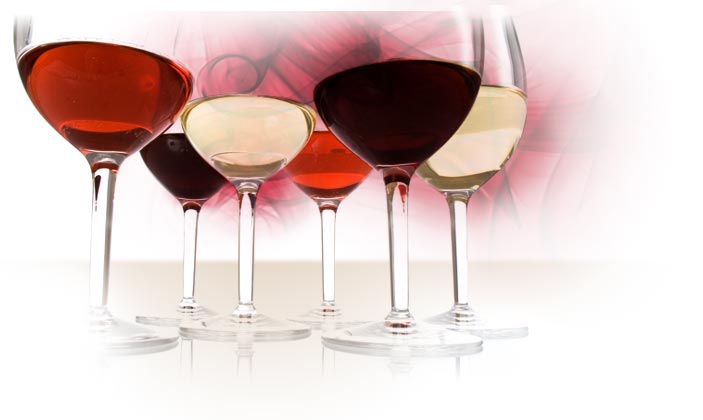Difference between red, pink and white wine making
Although the weather and soil are essential for quality wines, not least is the winemaking process. So much so that depending on oenological procedures employed in the preparation, of the best grapes can leave a bad wine and a wine grape correct poor.
 Before starting the process depending on the wine to be obtained, the grape is subjected to a process that is common to all types: juice extraction. Both grape juice of the white grapes as black grapes is colorless or slightly yellowish, since pigments (anthocyanins) of the fruit is found in the skin thereof, and not in the pulp. Clusters from vintage are discharged into a container called frustopyramidal receiving hopper from where they are transported to the crusher. There, the fruit undergoes a pressure burst, a process known as crushing and that must be done accurately to avoid tearing or breaking hard vegetables elements cluster as pepitas, scrapes or stalks (cluster vegetation structure) and skins. These ingredients contaminate the wort with undesirable odors and flavors, as well as increasing their acid content.
Before starting the process depending on the wine to be obtained, the grape is subjected to a process that is common to all types: juice extraction. Both grape juice of the white grapes as black grapes is colorless or slightly yellowish, since pigments (anthocyanins) of the fruit is found in the skin thereof, and not in the pulp. Clusters from vintage are discharged into a container called frustopyramidal receiving hopper from where they are transported to the crusher. There, the fruit undergoes a pressure burst, a process known as crushing and that must be done accurately to avoid tearing or breaking hard vegetables elements cluster as pepitas, scrapes or stalks (cluster vegetation structure) and skins. These ingredients contaminate the wort with undesirable odors and flavors, as well as increasing their acid content.
For white wine, separate the skin of the grape juice and wine is fermented clean only. The transformation of grape juice into wine or what is the same sugar into ethanol is usually carried out in stainless steel tanks to allow these to better control the temperature of the process and be able to thoroughly clean quickly and conveniently. Fermentation of white grape juice usually around 16°C, since higher temperatures lead to a loss of primary aromas associated with each of these different varieties. Sometimes the actual fermentation can be triggered in oak or even a wine already completed can be entered in that oak barrels, thus creating wines with more volume and silkiness and also will present scents and sensations associated with aging in wood.
The main feature of the vinification of red wine is that the wine is fermented in contact with the solid parts of the grape (skins and seeds). Generally the stages in the production of red wines are: grape stemming, crushing, pulp obtained driving the tank, fermentation, racking and malolactic fermentation. The red grapes juice are fermented at a temperature around 25°C to ensure you get the maximum possible color extract. In the second fermentation or malolactic fermentation occurs degradation of malic acid, lactic acid and obtained by changing the sensory profile of wine aromas and nuancing evolving toward a wine bouquet and rounder less acid. The aging of red wines is widespread, thus obtaining more complex wines, which are added hints of fruit and wood enhance with feelings.
There are white wines produced in Spain, for example, with our star red variety, Tempranillo. And the traditional French champagne is made from three grape varieties : Chardonnay, Pinot Noir and Pinot Meunier, being, the latter two grapes. But you can not make red wine from white grapes, basically because the skin of the white grape lacks anthocyanins, which are pigmented molecules responsible for color in red wines.
For the preparation of rose wine red grapes are used, so that the contact time between the grapes juice and skins usually hours (more contact hours, more color in wine), this being sufficient to give the desired color to wort is fermented completely clean, like a white wine is involved, but getting a rosé wine. For the same reason as in the case of white wines, temperature fermentation of grapes juice is usually around 16°C. There is no custom of rose wines aging in oak barrels.
Broadly speaking, the process of winemaking clarets is very similar to previously discussed with red wines (stemming, crushing, fermentation with skins and pressing) the only difference is that not only made from red grapes, but also white grapes added to the tank, so that the color is less (because the color is provided by only the red grapes.).From the legislative point of view, this wine does not exist, but it is included within the pink ones.
Anyway, both red grapes and white grapes there are dozens of different varieties giving rise to the wide variety of wines we know. And among the varieties there is a unique variety called "tintorera" also containing pigments in the pulp, and is used mixed with other varieties to increase wine color.







